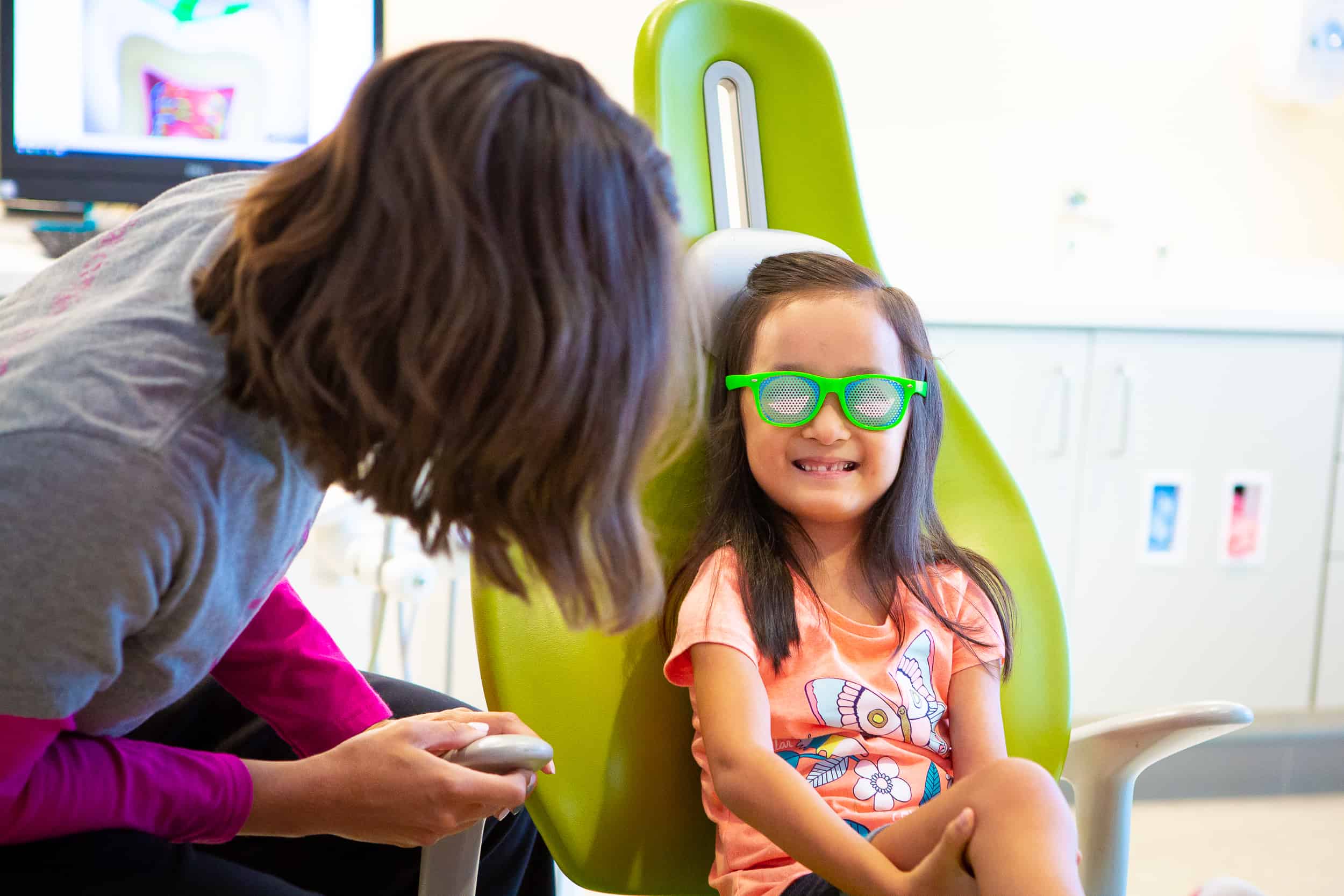Wouldn’t it be great if there was an easy solution to all of your dental problems? As a parent, hearing that your child has a cavity can be concerning. We’re here to help safeguard your child’s dental health and hygiene as they grow up. Can you get rid of a cavity by brushing?
Read this blog to find the answer. Discover what steps to take if your child develops one in the future.

Can a cavity go away by brushing?
We often get asked by parents and kids whether brushing can remove a cavity. Once a cavity has formed in a tooth, it cannot be reversed. Good brushing habits may help prevent cavities, but they cannot cure them. However, if tooth decay is detected in its early stages, it can be reversed by following good brushing habits.
The best way to prevent cavities or reduce the risk of cavities is by:
- consistent brushing and flossing
- exposure to fluoride (such as using fluoride toothpaste or getting fluoride treatment)
- regular dental cleanings
For this reason, we advise scheduling a check-up with our team as soon as you notice cavity signs. Our team will advise you whether you can brush the cavity away or require further treatment.
How to Know if You Have a Cavity
As a parent, you always want to be on the lookout for early signs of cavities. If your child has a sharp, sudden sensation in their teeth when they eat something hot, cold, or sugary, it may be a sign that there is a problem with their oral health.
If a cavity forms and is left untreated, it can result in visible holes and pits in the teeth or even tooth loss. There could also be white or brown staining on the tooth’s surface. If you think your child has a cavity, don’t worry, we’re here to help! Our team will check your child’s teeth and recommend the most appropriate treatment.

What to Do When You Have a Cavity
While it’s best to avoid cavities, there are various treatments available for your child’s cavity depending on its severity. If it is in the early stages, we may suggest monitoring it and assessing it during the next appointment. In such cases, it’s essential to be vigilant with your child’s brushing and flossing habits.
To prevent future plaque build-up and food from getting stuck between teeth, it is important to brush teeth twice a day for two minutes. Focus on the area where the cavity is located and ensure that the two minutes are spent well.
If your child frequently develops cavities, we may suggest dental sealants to help safeguard their teeth against additional decay. It’s important to note that while this is a preventive measure, it shouldn’t replace proper brushing. The sealant treatment for your child is painless, quick, and easy. It does not hurt your child and offers long-lasting protection against cavities.
If your child has a very deep cavity, we will advise the best kind of dental filling to use. We do our best to make this process as easy and stress-free as possible for both parents and kids. The sooner a cavity is treated, the less likely your child will experience future issues with that tooth.
If you notice any early signs of cavities in your child’s teeth, it is advisable to visit the dentist as soon as possible. The severity of the pain and the condition of their teeth will determine the treatment required. It’s always best to have their teeth checked out before the problem worsens, even if there may be another issue causing the discomfort. Our team is committed to helping your child maintain a healthy and beautiful smile, and we are available to provide any necessary treatment for future cavities.
Keep Your Family’s Smiles Shining with Help From the Center for Pediatric Dental Health
Our team of specialized pediatric dentists provide care for both baby teeth and big kid teeth. During the visit, we prioritize teaching you how to encourage healthy habits and good hygiene for lifelong smiles, while making it a memorable experience. Call us today or request an appointment online. We are excited to meet you!










